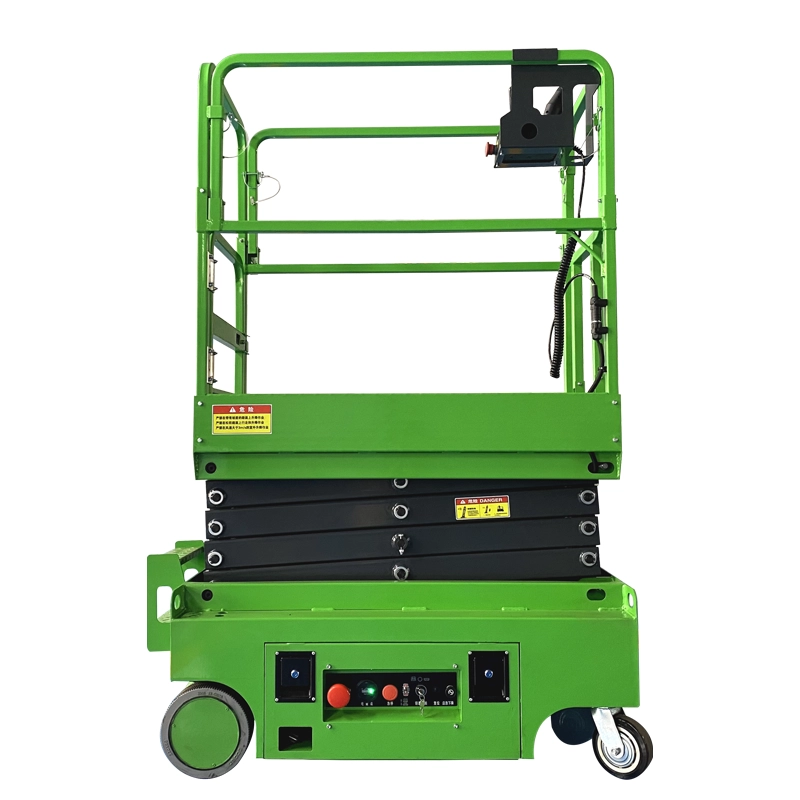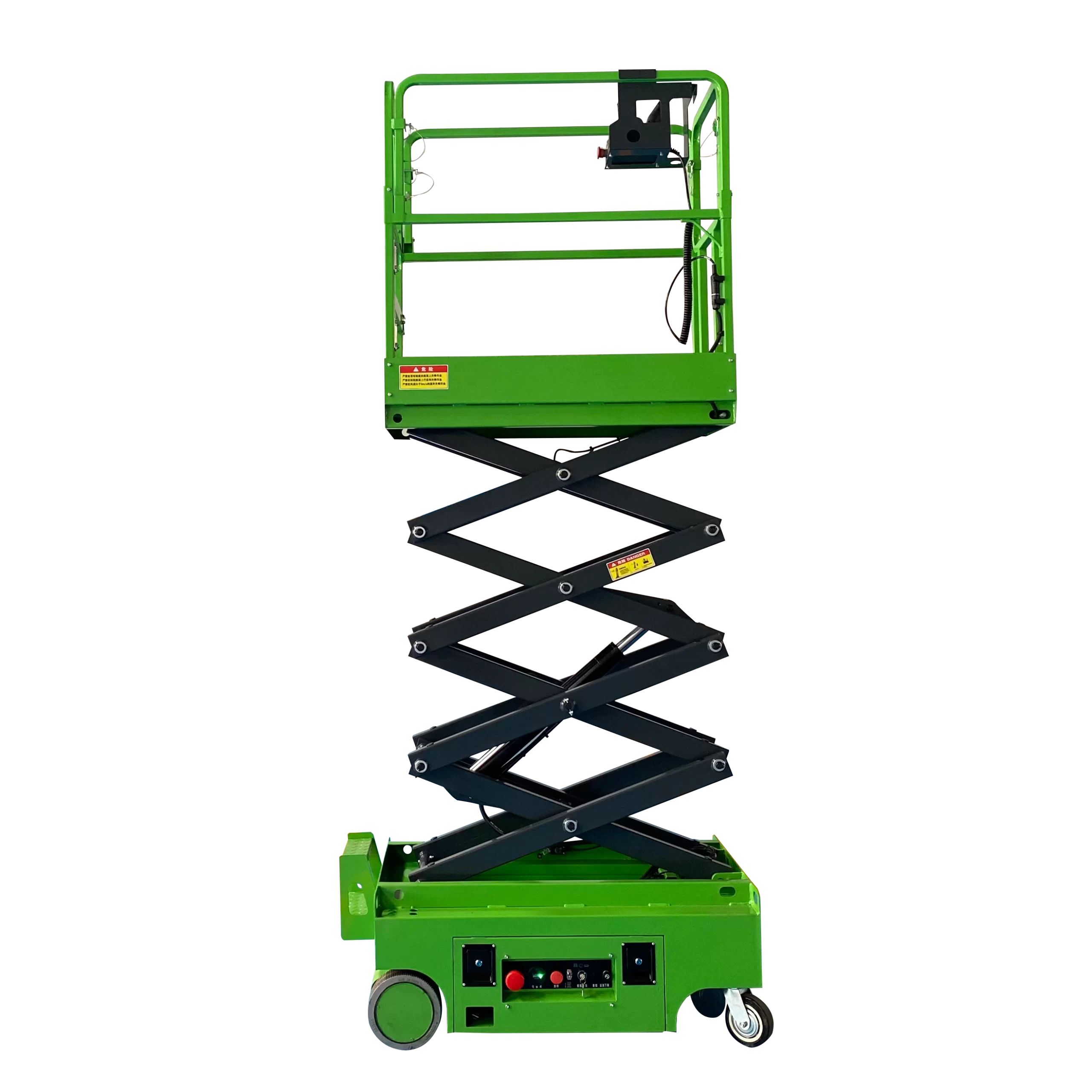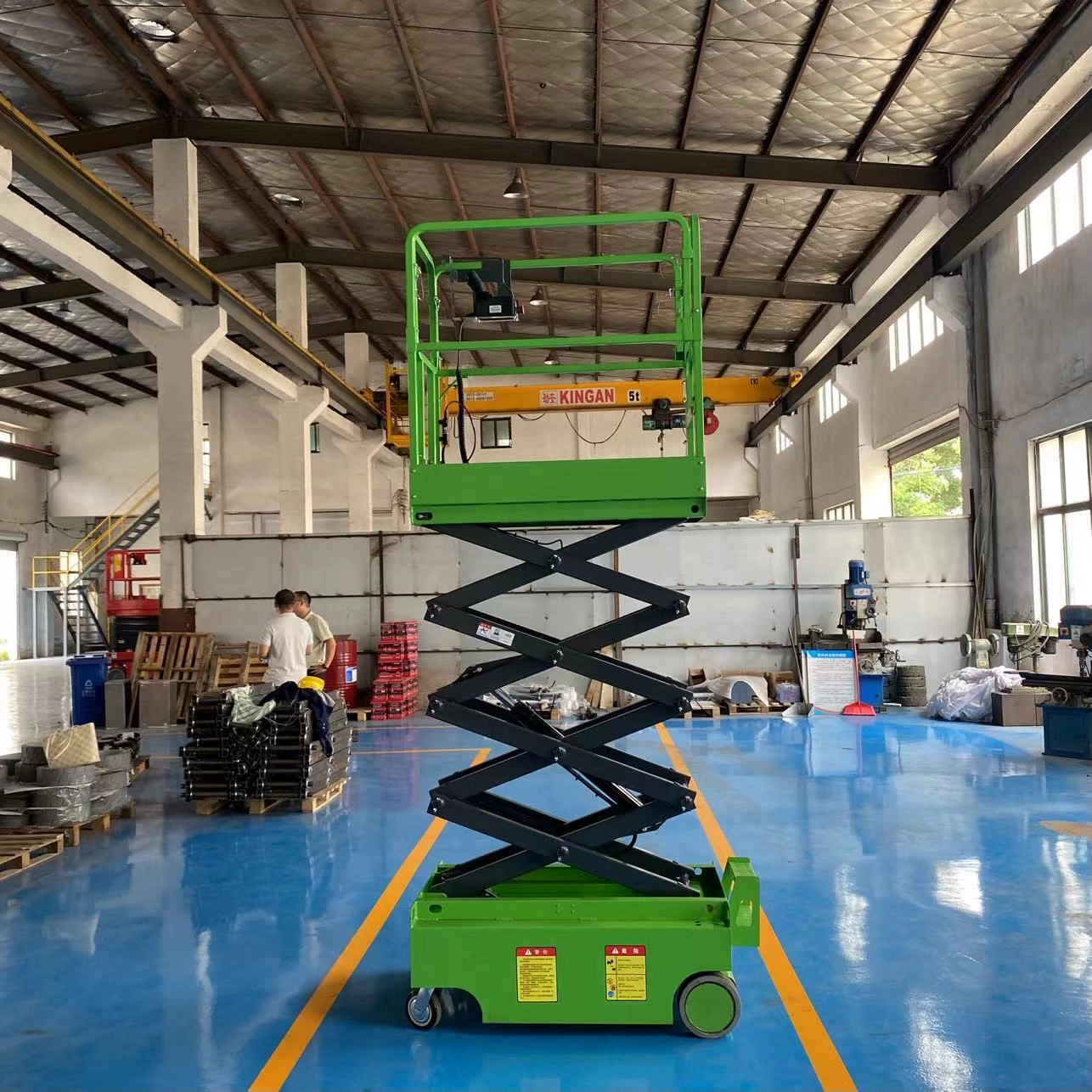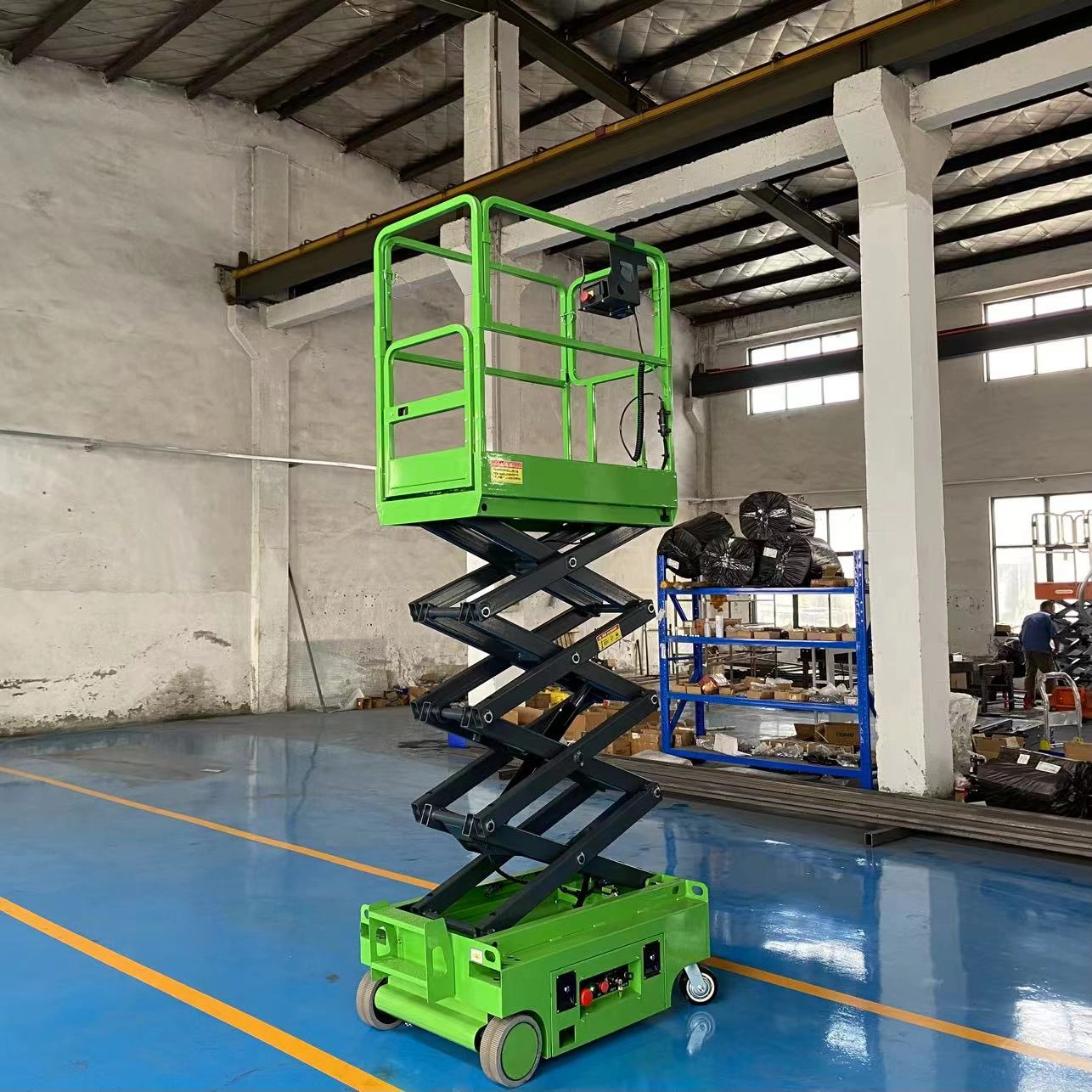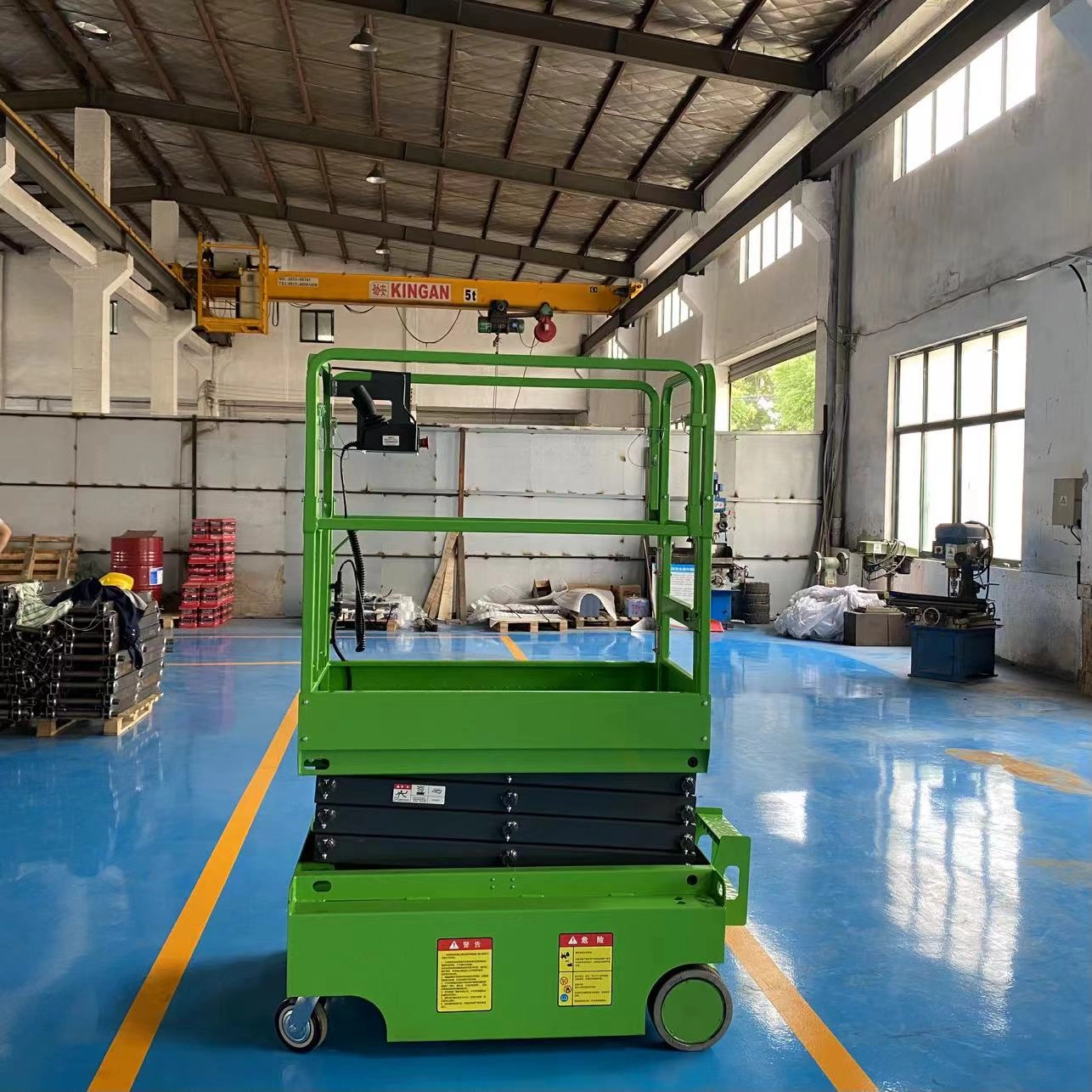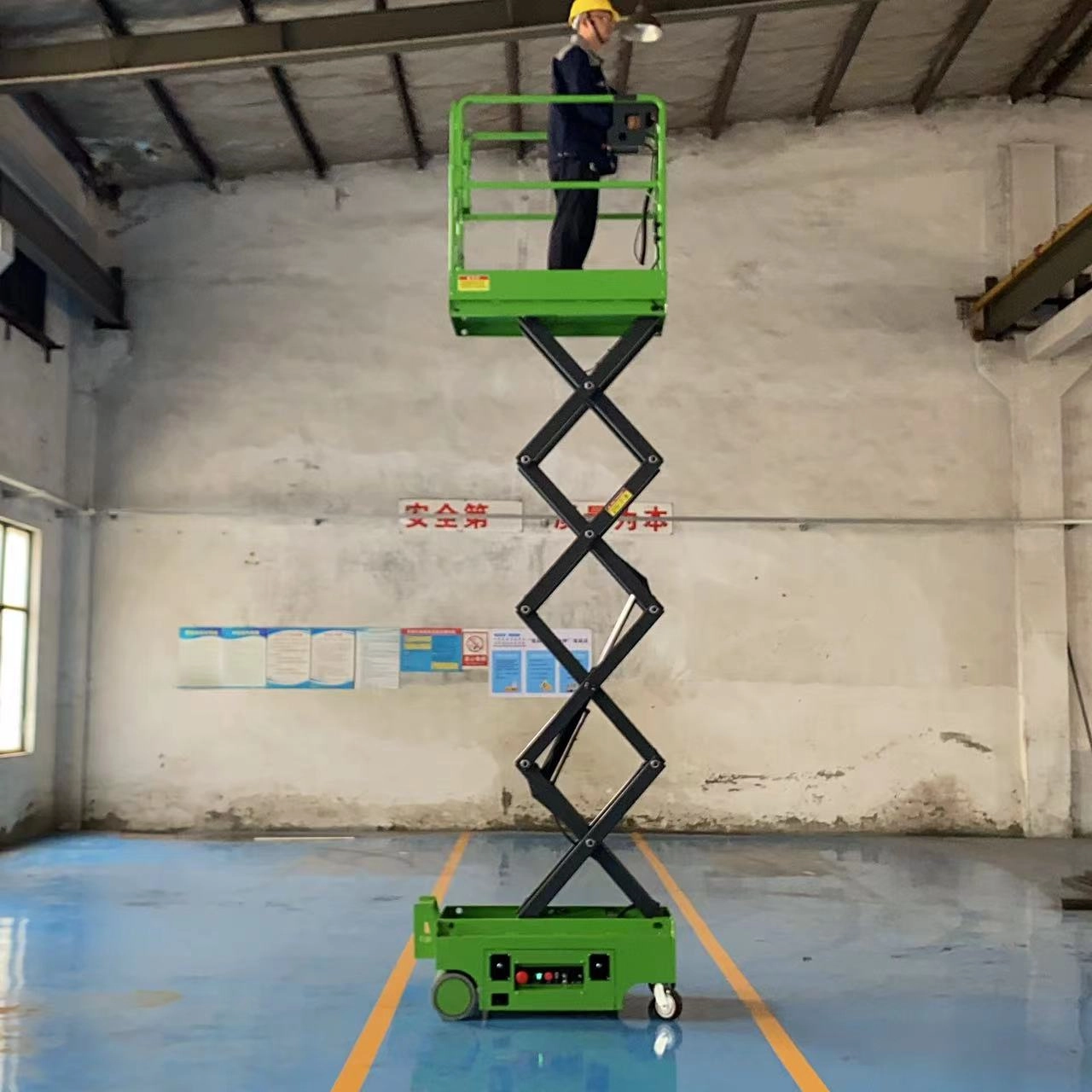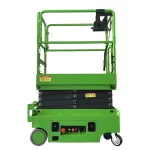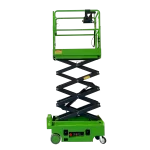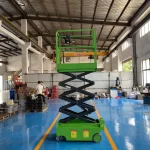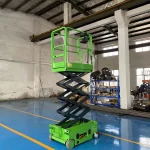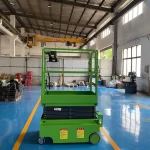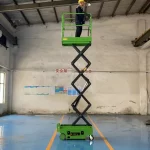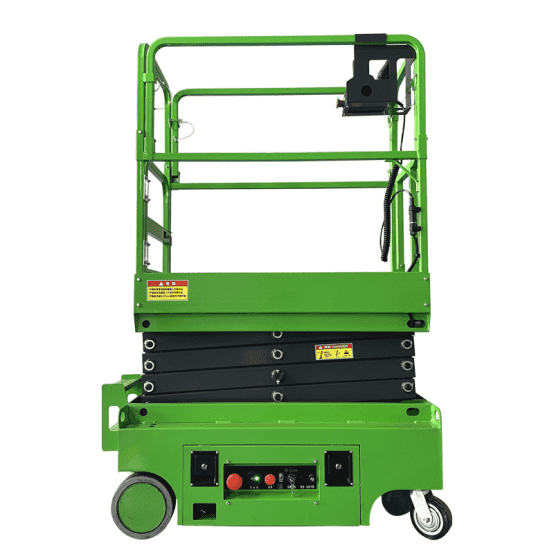


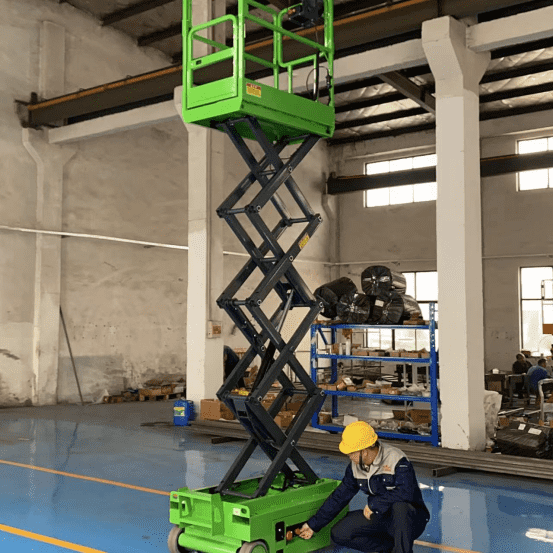


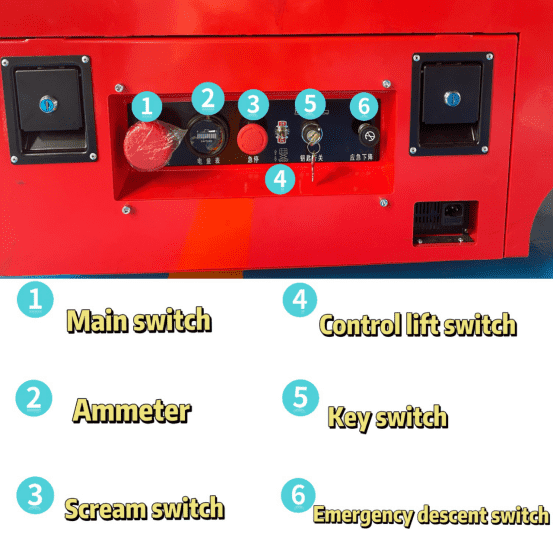
Electric scissor lifts are versatile lifting platforms commonly used in construction, maintenance, and warehouse applications. Here are some key features and advantages:
Key Features:
- Vertical Lifting:Scissor lifts primarily move vertically, making them ideal for tasks that require height access.
- Electric Power:They are powered by batteries, making them suitable for indoor use and reducing emissions.
- Platform Size:Available in various platform sizes to accommodate different loads and workspaces.
- Stability:The scissor mechanism provides a stable platform, enhancing safety while working at heights.
- Adjustable Height:Many models can reach significant heights, often ranging from 10 to 50 feet or more.
Advantages:
- Eco-Friendly:Electric lifts produce no exhaust emissions, making them safer for indoor use.
- Quiet Operation:They operate quietly compared to gas-powered lifts, minimizing noise pollution.
- Ease of Use:Electric scissor lifts are generally easy to operate, with intuitive controls.
- Lower Maintenance Costs:Electric systems typically have fewer moving parts than combustion engines, reducing maintenance needs.
- Safety Features:Most models come equipped with safety features like guardrails, emergency stop buttons, and anti-slip platforms.
Applications:
- Construction:Ideal for framing, drywall installation, and electrical work at height.
- Maintenance:Used for repairing ceilings, lighting, and HVAC systems.
- Warehousing:Helpful for reaching high storage racks and performing inventory tasks.
Operation:
Pre-Operation Checks:
- Inspect the lift for any visible damage or leaks.
- Check that the emergency stop button is functional.
- Ensure that all safety devices are in place.
Setup:
- Position the lift on a stable, level surface.
- Engage the brakes and ensure the wheels are chocked if necessary.
Starting the Lift:
- Up and down buttons
- Emergency stop
- Tilt indicator (if equipped)
- Turn on the power switch.
Use the control panel to operate the lift. Controls usually include:
Elevating the Platform:
- Press the up button to raise the platform.
- Monitor the height and surroundings as you ascend.
Working at Height:
- Use harnesses if required by regulations.
- Avoid overreaching; move the lift instead.
Lowering the Platform:
- Press the down button to lower the platform safely.
- Ensure the area below is clear of obstacles.
Safety:
- Personal Protective Equipment (PPE):Always wear appropriate PPE, including hard hats, safety shoes, and harnesses.
- Training:Ensure that all operators are trained in the use of scissor lifts.
- Load Capacity:Do not exceed the maximum load capacity specified by the manufacturer.
- Stability:Keep the platform level and avoid working on sloped or uneven surfaces.
- Environmental Awareness:Be mindful of overhead hazards such as power lines.
- Avoid using the lift in high winds or adverse weather conditions.
Maintenance:
- Regular Inspections:Conduct daily pre-operation inspections and more thorough inspections as recommended by the manufacturer.
- Cleaning:Keep the lift clean, especially the controls and safety features.
- Battery Maintenance (if electric):Check the battery charge regularly and clean the terminals.
- Repairs:Report and address any mechanical issues immediately.
- Service Records:Maintain records of inspections, repairs, and maintenance for accountability.
- Conclusion:Using a scissor lift platform requires attention to detail and adherence to safety practices. Make sure to consult the specific operator’s manual for the lift you are using, as features and controls may vary by model.

